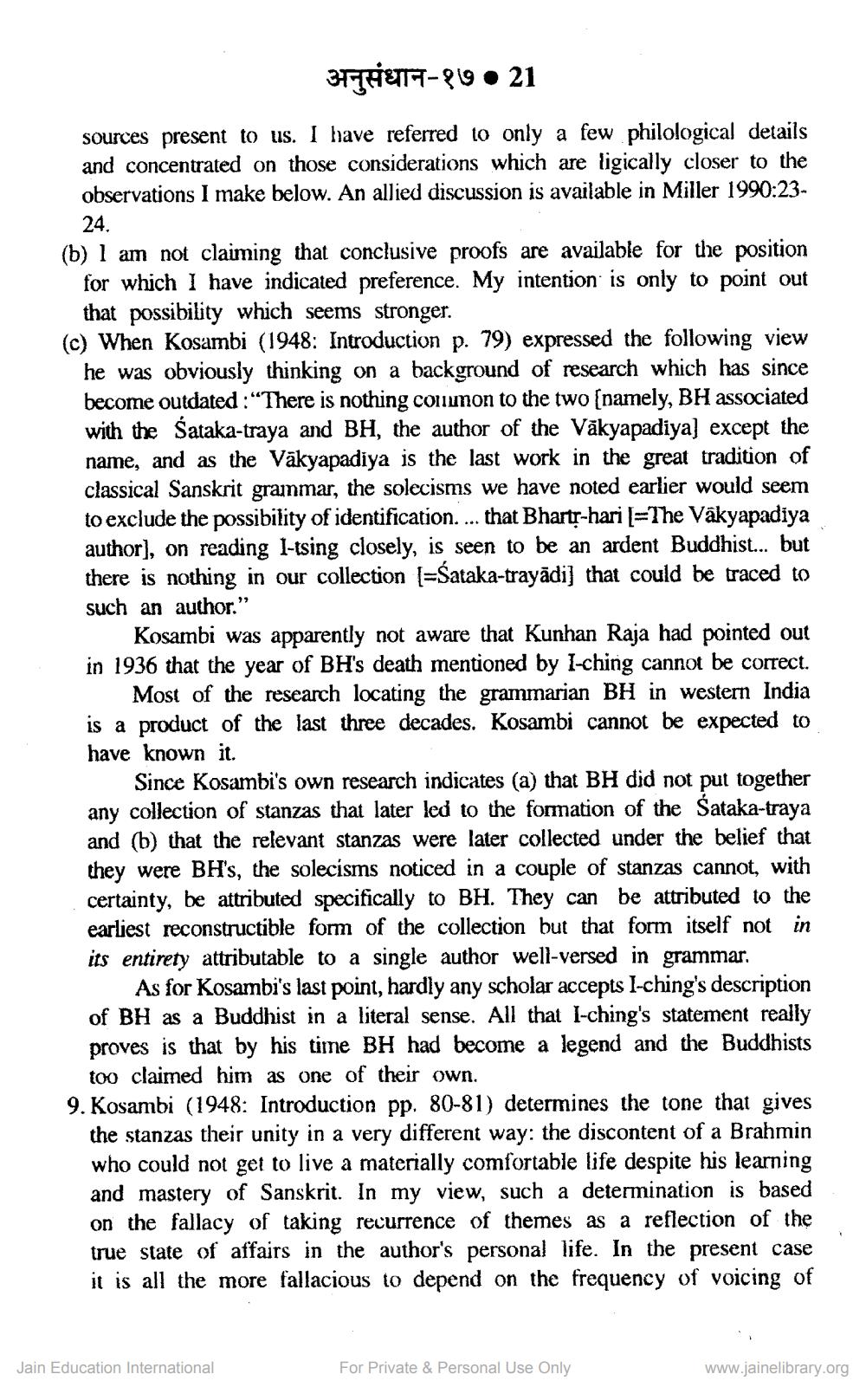________________
अनुसंधान - १७•21
sources present to us. I have referred to only a few philological details and concentrated on those considerations which are ligically closer to the observations I make below. An allied discussion is available in Miller 1990:23
24.
(b) I am not claiming that conclusive proofs are available for the position for which I have indicated preference. My intention is only to point out that possibility which seems stronger.
(c) When Kosambi (1948: Introduction p. 79) expressed the following view he was obviously thinking on a background of research which has since become outdated: "There is nothing common to the two [namely, BH associated with the Sataka-traya and BH, the author of the Vakyapadiya] except the name, and as the Vakyapadiya is the last work in the great tradition of classical Sanskrit grammar, the solecisms we have noted earlier would seem to exclude the possibility of identification.... that Bhartṛ-hari [=The Vakyapadiya author], on reading 1-tsing closely, is seen to be an ardent Buddhist... but there is nothing in our collection [=Sataka-trayādi] that could be traced to
such an author."
Kosambi was apparently not aware that Kunhan Raja had pointed out in 1936 that the year of BH's death mentioned by I-ching cannot be correct. Most of the research locating the grammarian BH in western India is a product of the last three decades. Kosambi cannot be expected to have known it.
Since Kosambi's own research indicates (a) that BH did not put together any collection of stanzas that later led to the formation of the Sataka-traya and (b) that the relevant stanzas were later collected under the belief that they were BH's, the solecisms noticed in a couple of stanzas cannot, with certainty, be attributed specifically to BH. They can be attributed to the earliest reconstructible form of the collection but that form itself not in its entirety attributable to a single author well-versed in grammar.
As for Kosambi's last point, hardly any scholar accepts I-ching's description of BH as a Buddhist in a literal sense. All that I-ching's statement really proves is that by his time BH had become a legend and the Buddhists too claimed him as one of their own.
9. Kosambi (1948: Introduction pp. 80-81) determines the tone that gives the stanzas their unity in a very different way: the discontent of a Brahmin who could not get to live a materially comfortable life despite his learning and mastery of Sanskrit. In my view, such a determination is based on the fallacy of taking recurrence of themes as a reflection of the true state of affairs in the author's personal life. In the present case it is all the more fallacious to depend on the frequency of voicing of
Jain Education International
For Private & Personal Use Only
www.jainelibrary.org




